Sand is a mixture of different materials. You will find more in the post What is sand. Here is an overview of minerals which are the most common sand constituents. Most minerals may occur as sand grains somewhere. So do we have to cover thousands of minerals here? No, we really need to know less than 50 of them to have a reasonably good overview of all the likely possibilities. Other minerals are rare in sand or are found only in specific locations. Mineral identification is so much easier if you know what is the range of possibilities. The following list of minerals in sand is here to help you achieve just that.
Quartz
There is no other mineral that is as important in sand as quartz. It is really almost everywhere and forms the bulk of sand composition in most cases. Pure quartz is transparent but quartz can have almost any color. The grains are usually rounded and they may be covered by a very fine hematite pigment which gives them a rust-colored appearance. Why is quartz so common in sand? It is a widespread rock-forming mineral and it is also extremely resistant to weathering. Quartz has no cleavage. So we never see planar surfaces on fresh fractured grains. Rocks that contain lots of quartz are sandstone, quartzite, gneiss, granite, and many others.
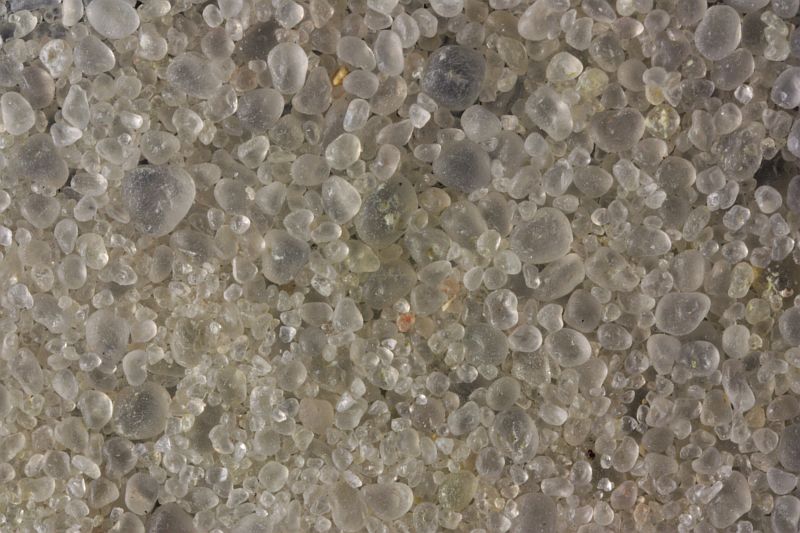
Chalcedony
Chalcedony is composed of microcrystalline quartz and moganite (there is a slight structural difference between them). It is so fine-grained that individual crystals are impossible to see with a naked eye. Even light microscope is of little help. Chalcedony is formed by the crystallisation of silica gels. It is common cementing material in sedimentary rocks. Chert (rock type) is a fine granular microcrystalline quartz (may also contain moganite).
Sanidine
Sanidine is one of feldspars which are very important rock-forming minerals. Feldspars make up more than half of the composition of the crust. Sanidine itself is definitely not the most common among them. It occurs primarily in volcanic rocks (rhyolite, trachyte, phonolite). We have the best chances to encounter sanidine in volcanic sands of felsic composition. Sanidine is one of K-feldspars (Potassium-rich feldspars). Other common K-feldspars are microcline and orthoclase which are more frequently found in sand.
Orthoclase and microcline
Common K-feldspars but they are not as resistant to weathering as quartz. K-feldspars disintegrate to clay minerals. It may be quite difficult to differentiate feldspars from quartz but they generally appear to be more blocky. Feldspar grains may have planar cleavage surfaces and they often show signs of weathering. K-feldspars are commonly white, yellow or pink in color. Microcline generally forms deeper in the crust than orthoclase but it is pretty complicated task to differentiate one from the other. K-feldspars are the most important building blocks of granite.
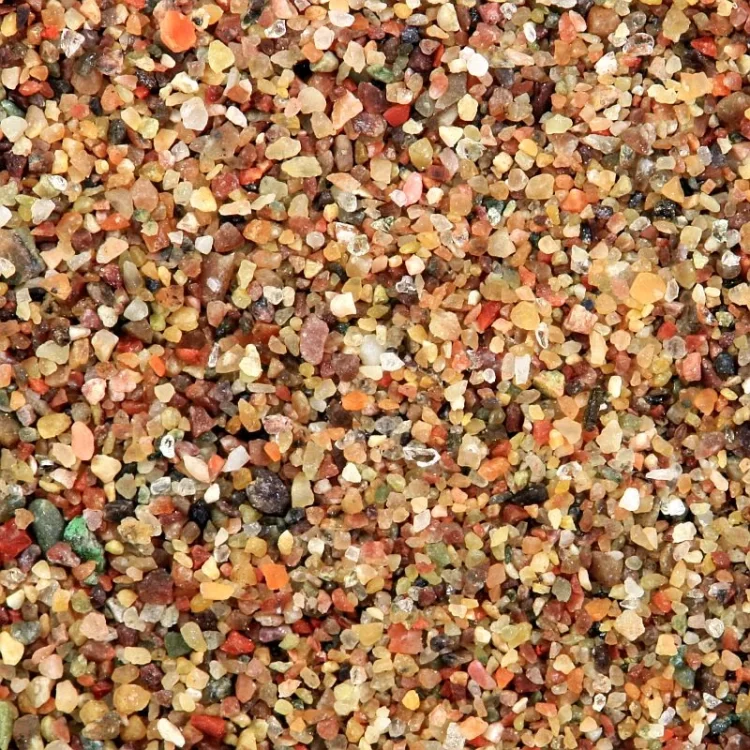
Plagioclase
Plagioclase feldspars are definitely the most widespread feldspars overall but their resistance to weathering is not good. Plagioclase decays faster than K-feldspars. We have the best chances to see plagiocalse containing sand in volcanically active areas where fresh sand rich in volcanic minerals is abundant. Or in areas where the rocks are nearby and rich in this mineral (granodiorite, tonalite). Plagioclase crystals are often elongated. They are usually different shade of gray in color. Plagioclase is a common mineral in mafic igneous rocks (basalt, gabbro).
Muscovite and biotite
These minerals are two of the most common mica varieties. Micas are very easily recognizable because they occur as very thin and flexible flakes. Sometimes larger blocks of mica occur but they can be split into an almost endless number of ultrathin layers. Muscovite is generally colorless while biotite is brown or black. Both muscovite and biotite are common rock-forming minerals. They are most common in river sands. Wind-blown (eolian) sands generally contain much smaller amount of micas.
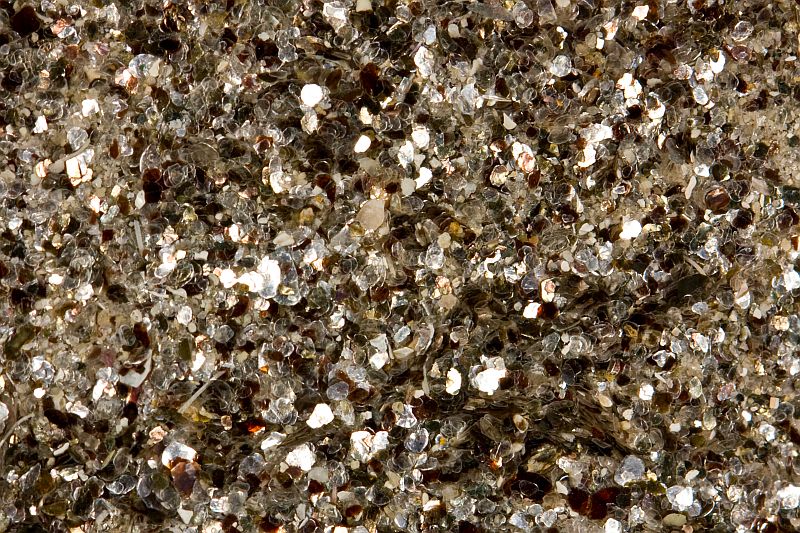
Glauconite
Glauconite is somewhat different from most other minerals discussed here because it is not formed from magma nor is it created during the metamorphism of existing rocks. It forms through the sedimentation process as rounded green pellets in marine sediments. Glauconite is the principal component of greensands in which it forms a mixture with quartz.
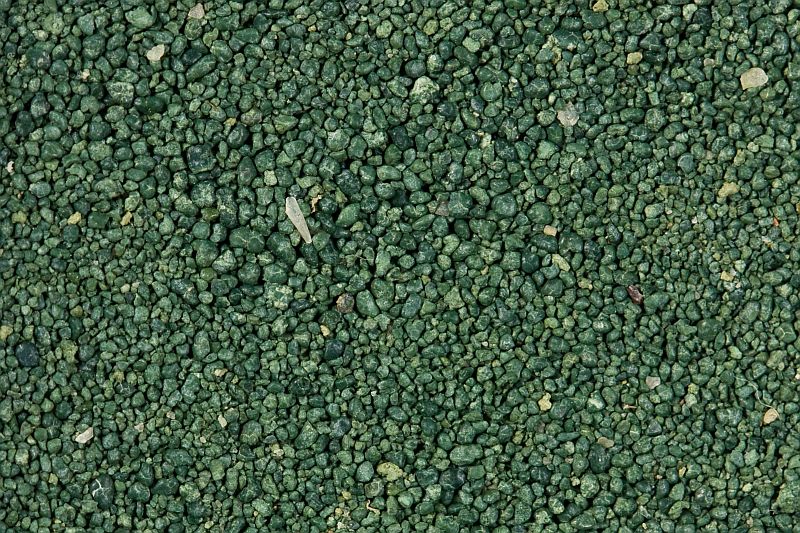
Clay minerals
Clay minerals themselves are not sand-forming minerals. They can not be because their size is not large enough to be considered sand. However, they are often present in sand as mud (when wet) or dust (when dry). Beach sands are generally free of dust and so are eolian deposits. Dust is present in many river and especially inland sand samples. Most clay minerals are the weathering product of feldspars but many other common minerals also have a destiny to become clay.
Pyroxene
Pyroxenes are important rock-forming minerals but they are unstable in the weathering environment. Therefore we can usually see them in immature sediments of volcanic origin. Pyroxenes give black color to basalt. Volcanic sands are black because of pyroxene and some other dark-colored minerals of magmatic origin. The most abundant member of pyroxene group is augite. Not all pyroxenes are black. Some are colorful or transparent but they occur rarely. Pyroxene grains are usually elongated.
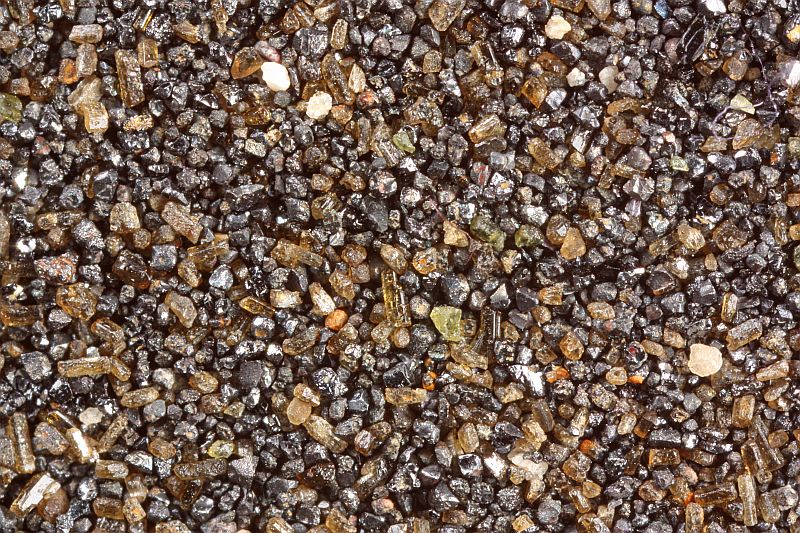
Amphiboles
Amphiboles are elongated as well as pyroxenes and generally also black or greenish. They are closely related to pyroxenes. Amphiboles endure weathering somewhat more successfully and are therefore not as rare in sands. The most common amphibole is hornblende. Amphiboles tend to have a stronger luster than pyroxenes have. Amphiboles are common minerals in igneous (diorite) and metamorphic (amphibolite) rocks.
Pumpellyite
Pumpellyite probably occurs in sand more often than reported because it is usually misidentified as epidote (these two are actually related). Pumpellyite is formed in metamorphic rocks (mostly glaucophane schist) and hydrothermally altered mafic igneous rocks (basalt). Pumpellyite is usually green or bluish green in color.
Epidote
Epidote is not a single mineral. It is a group of related yellowish or greenish minerals but we treat them as one mineral because you would need pretty sophisticated analytical tools to identify them more precisely. Epidote is a metamorphic mineral. By saying that I mean that this mineral as a sand grain is a weathering product of metamorphic rocks.
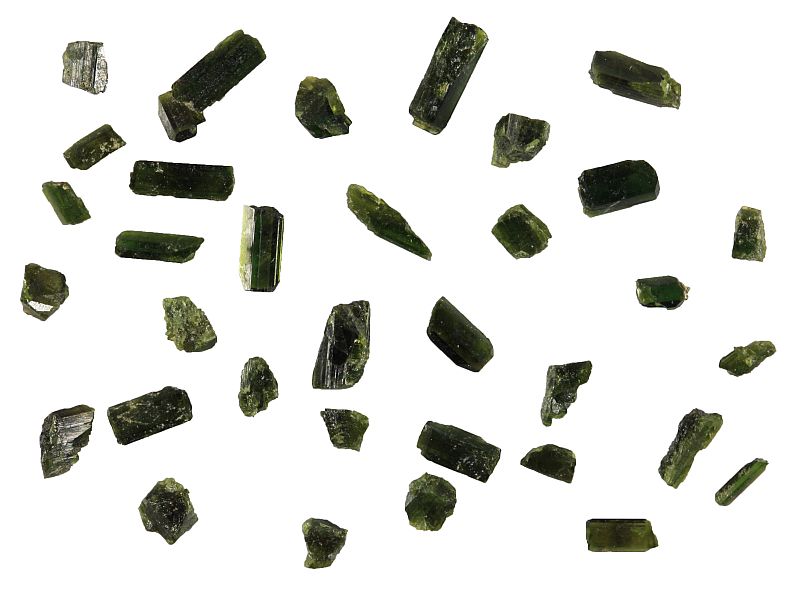
Tourmaline
Tourmaline is formed in granitic pegmatites. It is a relatively rare mineral in rocks but pretty common in the heavy mineral fraction of most sand samples because of its extreme resistance to weathering. Tourmaline is usually black (variety named schörl) although it could be also brown (dravite) or colorful (elbaite). Tourmaline lacks cleavage. Although tourmaline appears to be black, it is actually translucent. If your microscope has an additional light source below the sample, you can use it to see that black grains become translucent and brown. It distinguishes tourmaline from opaque ilmenite which is also black and may superficially be very similar. However, this method is not too useful to differentiate tourmaline from pyroxenes and hornblendes. Tourmaline has a very strong pleochroism. This property is useful if you have an access to a polarizing microscope.
Olivine
Olivine is usually green and mostly present in volcanic sands. It is the least resistant to weathering among the common heavy minerals. Epidote may sometimes be misidentified as olivine. Weathered olivine may be brown, orange or yellowish.
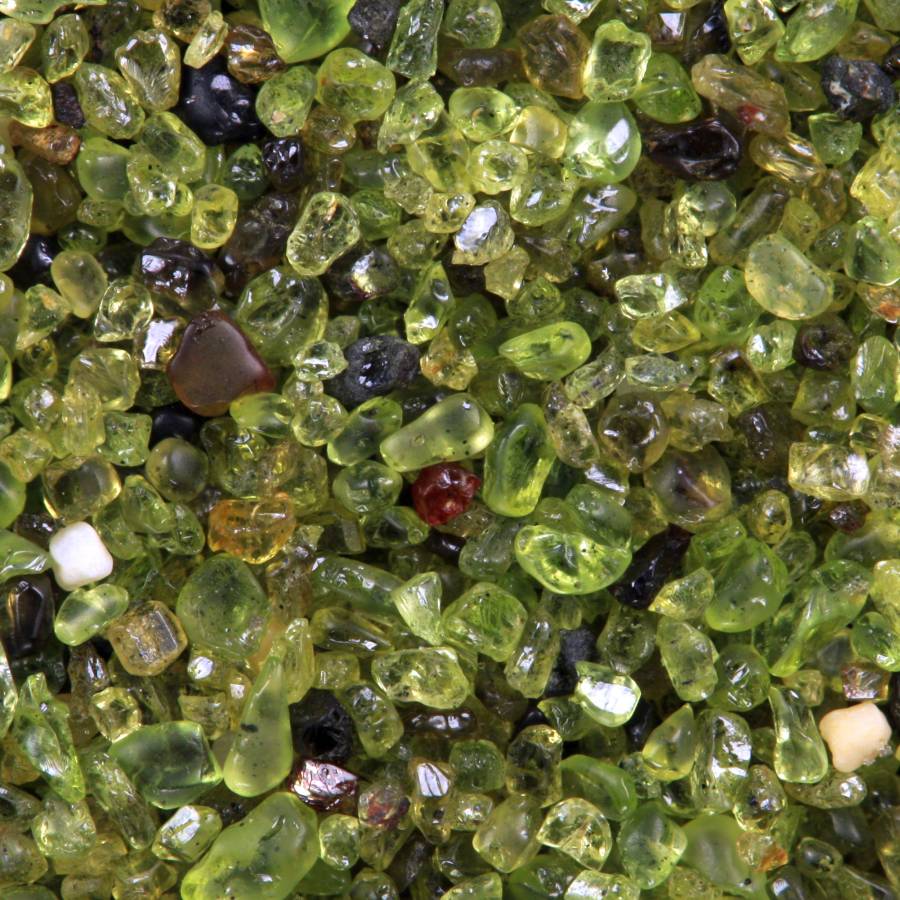
Garnet
Garnet is very common heavy mineral (actually mineral group) in many sand samples. Most garnets are pink, orange or red. Garnet have isometric crystal structure which means that they are very rarely elongated. Garnets are formed in both metamorphic (schist, amphibolite, eclogite) and igneous (some granites, peridotite) rocks. When sand contains abundant garnet, it usually contains epidote and magnetite as well. Some garnets (pyrope) are useful index minerals when diamond-bearing kimberlite pipes are searched for. Staurolite grains (deeper red color) may be misidentified as garnets.
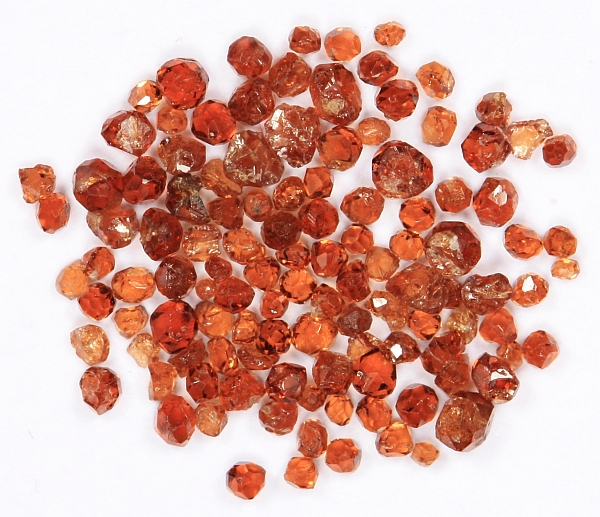
Sillimanite
Sillimanite is a metamorphic mineral. It occurs mostly in schist and gneiss. It may be present in lesser amount in some granites as an accessory mineral. As a sand grain it usually is accompanied by other metamorphic minerals like kyanite, staurolite, mica, and garnet. It is usually colorless or light brown in color. Sillimanite grains are mostly elongated.
Kyanite
Kyanite is closely related to sillimanite. These two together with andalusite have the same chemical composition but they are different structurally. Kyanite is blue or gray and bladed. It is also a metamorphic mineral like sillimanite.
Staurolite
Staurolite is a metamorphic mineral from medium-grade metamorphic pelitic (parent rocks contained lots of clay) rocks just like kyanite, sillimanite and garnet. They all contain large amount of aluminum. When these minerals are present in sand, you can say with a high degree of certainty that this sand is a weathering product of a metamorphic terrain. Staurolite is brown or reddish brown.
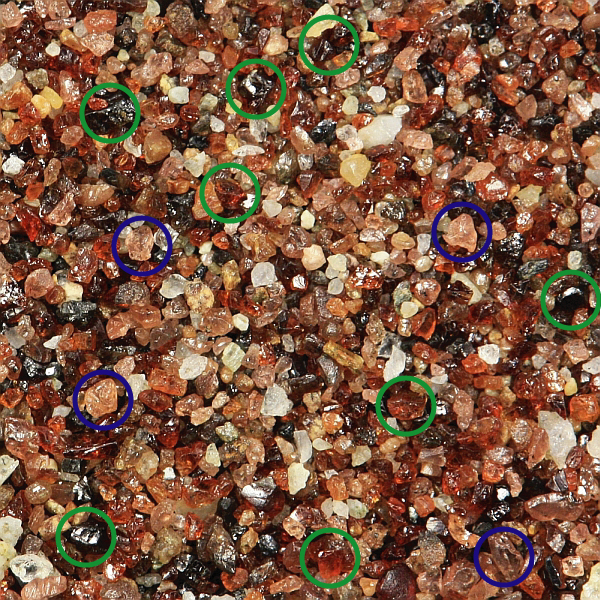
Titanite (sphene)
Titanite is not abundant anywhere but it is present in small amounts in many mostly plutonic (formed deep inside the crust, not volcanic) igneous and some metamorphic rocks. It is often associated with biotite and hornblende. It is not very abundant in sand composition but sometimes you can find characteristically wedge-shaped grains which may have varying color.
Topaz
Topaz is a rare but quite hard (number eight on the Mohs scale) mineral. Most topaz grains crystallized from magma. It is not an easy task to identify topaz. I am pretty sure that most topaz crystals are misidentified and overlooked as ordinary quartz. Topaz is usually colorless.
Zircon
Zircon is one of the most resistant minerals. Oldest zircon crystals are almost as old as the Earth itself. These crystals are the oldest Earth material we know. Meteoritic material is older but it is extraterrestrial in origin. Zircon crystals are generally very small and elongated. They are usually transparent and contain inclusions. It is easy to identify them when using high magnification and illumination from below the sample. Zircons are very resistant but as time goes by they tend to partly destroy themselves by internal radiation. They contain small amount of uranium which may replace zirconium in the crystal strucure. This fact makes zircon grains very valuable to geologists as a geological chronometers.
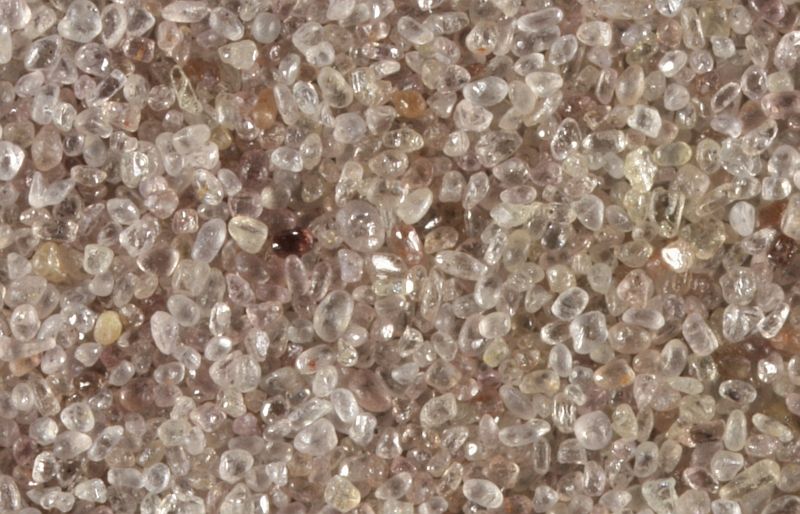
Apatite
Apatite is present in small quantities in many igneous and metamorphic rocks. It is also an important biomineral. Your teeth, for example, are largely made of this mineral. Apatite crystals are usually elongated and have colorless or pale shades of blueish, greenish or yellowish color.
Monazite
Monazite is an igneous and metamorphic mineral. Monazite grains are usually very small and not easily spotted. They are mostly pale yellow or colorless. Monazite is a valuable mineral resource. It is mined because it contains some rare and valuable chemical elements (cerium, lanthanum, thorium).
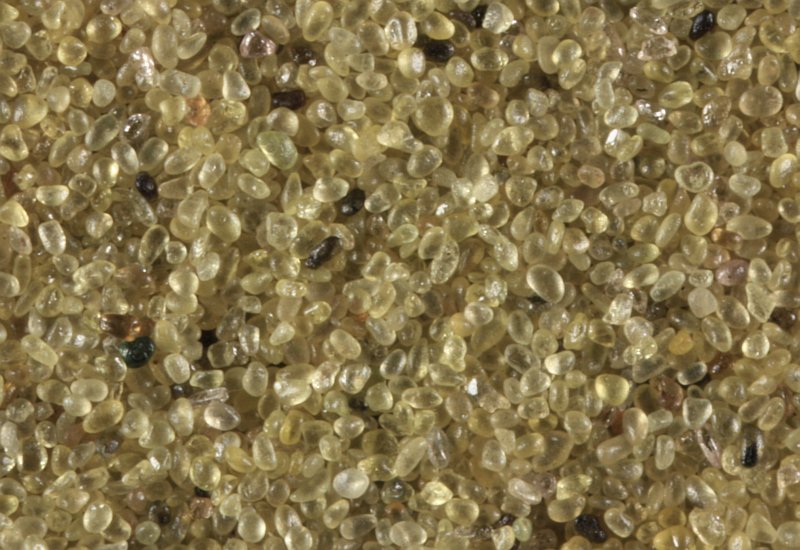
Xenotime
Xenotime is related to monazite. It is also valued because of its rare component (yttrium) and some other valuable elements which may replace yttrium in the crystal structure of xenotime. Xenotime is an igneous and metamorphic mineral just like most other minerals described here. It is resistant to weathering and occurs often in the heavy mineral fraction of sands although it is often misidentified as zircon. Xenotime is elongated and usually colorless, yellow or light brown.
Rutile
Rutile occurs in small amounts in igneous and metamorphic rocks. It is a common heavy mineral in sand because it is very resistant to weathering. Rutile is reddish brown and usually elongated. It is easier to spot when the sample is illuminated from below. Rutile is a titanium oxide. It is mined for its titanium content.
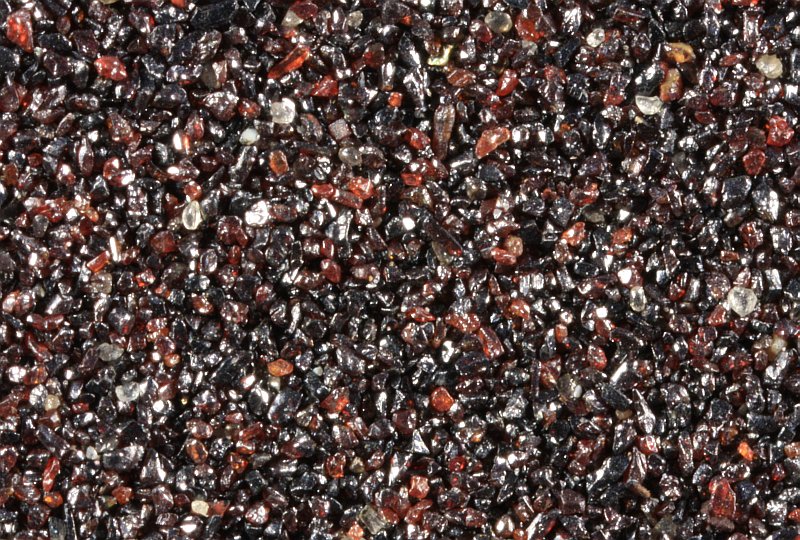
Anatase
Anatase has the same composition as rutile. It is also resistant to weathering and comes from igneous rocks or hydrothermally altered veins. Anatase is pretty similar to rutile. It is also mostly deep brown.
Cassiterite
Cassiterite is a tin oxide. Cassiterite comes from igneous rocks or hydrothermally altered veins. Cassiterite is usually brown but it is not easy to identify. Some grains may be twinned in a characteristic way (elbow twins). Cassiterite may be very similar to rutile.
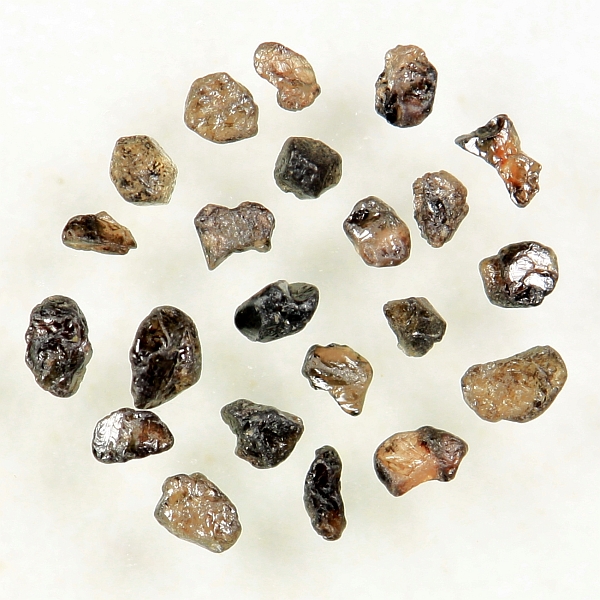
Corundum
Corundum is a very hard mineral (number 9 in the Mohs scale). It is widespread but nowhere abundant. Corundum forms in igneous and metamorphic rocks. It is usually not accompanied by quartz because corundum forms in silica deficient conditions (quartz is silicon oxide – crystallization product of excessive silica). Corundum may be colored in many different shades. Blue corundum is also called sapphire. Red corundum is ruby. Corundum grain usually catches attention because of its unusual color.
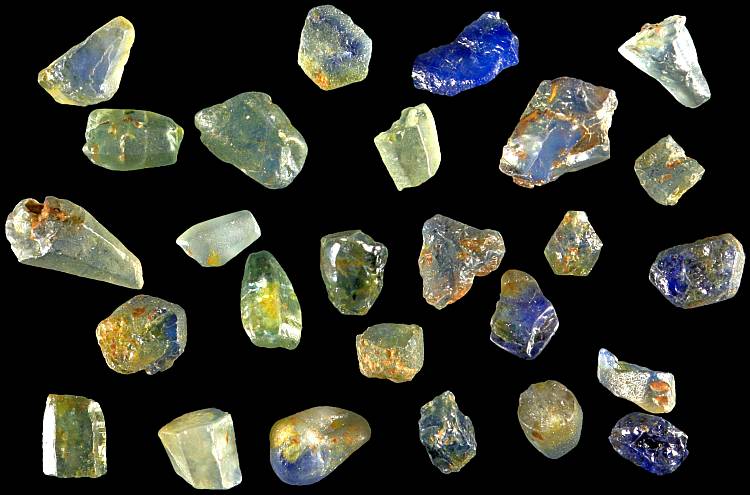
Hematite
Hematite is actually very common component of many sands and sandstones but more often not as large sand-sized grains. It is mostly very fine-grained pigment on the surface of other grains. Hematite gives reddish rust-colored hue to many sandstones. Such hematite pigment is deposited from the groundwater moving in the pore space of sand deposits. But larger hematite grains also occur in the heavy mineral fraction of sand.
Ilmenite
Ilmenite is a widespread accessory mineral in many igneous and metamorphic rocks. It is opaque and has a metallic black color. It is weakly magnetic due to intergrown magnetite. Ilmenite grains tend to be somewhat tabular. Ilmenite is mined for its titanium content.
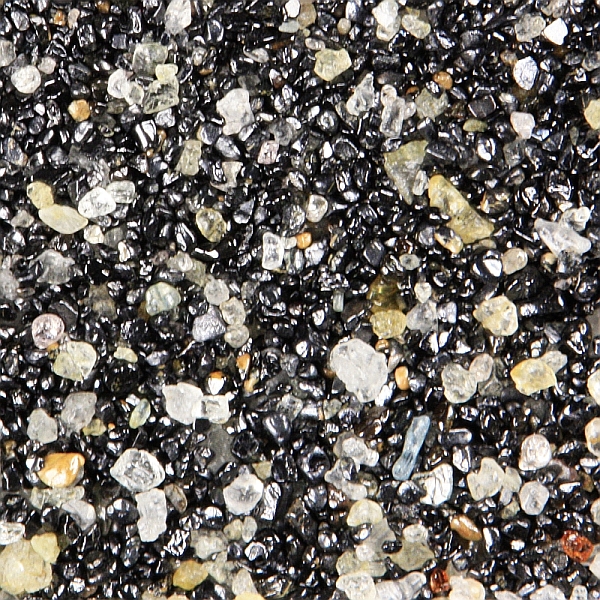
Magnetite
Magnetite is easy to identify because it is very magnetic. Magnetite grains are generally small and equant. Some grains may have well-developed octahedral crystal faces. Magnetite comes from igneous and metamorphic sources.
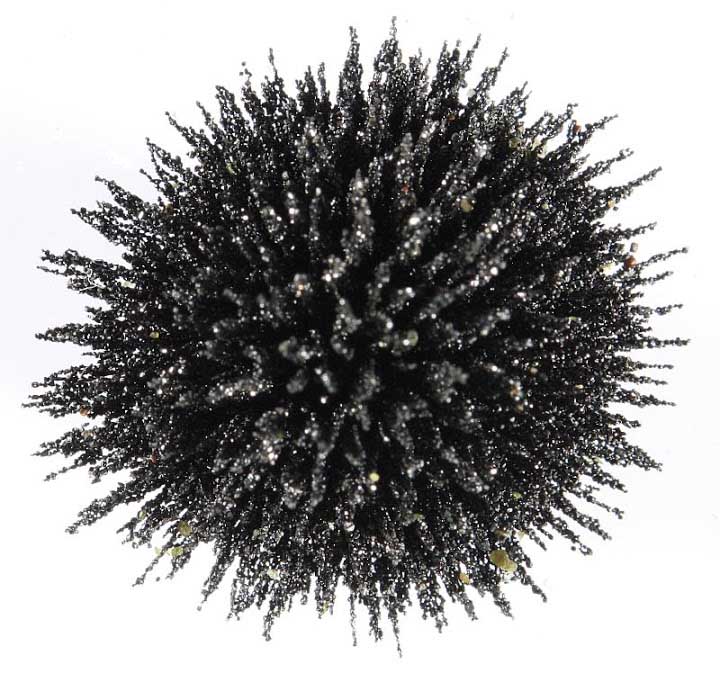
Chromite
Chromite has the same crystal structure as magnetite but it is only weakly magnetic. Chromite forms in ultramafic igneous rocks. Chromite is an ore of chromium.
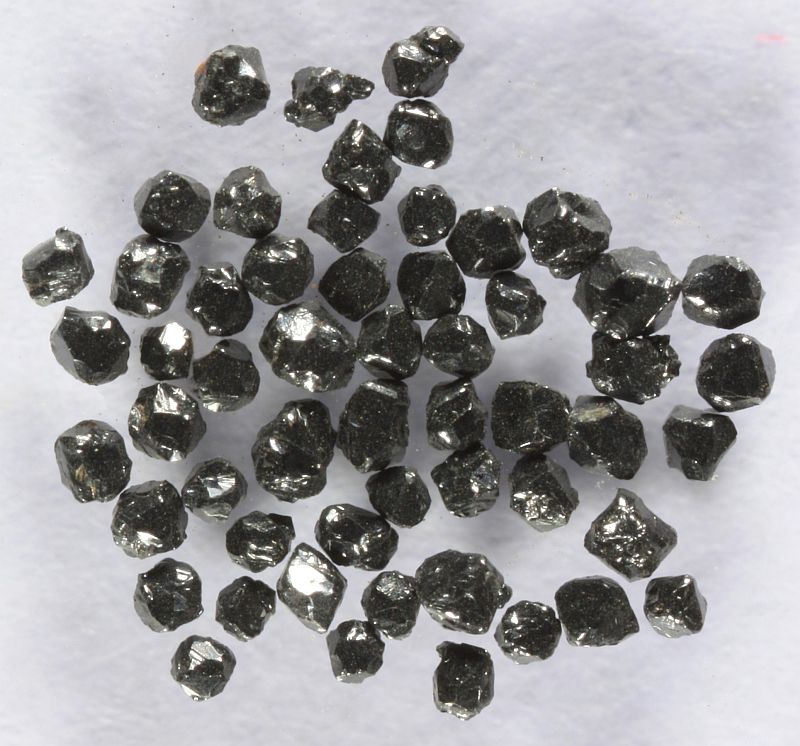
I did not mention many minerals which you probably have seen as sand grains. Even my own collection contains many sand samples which are composed almost solely of minerals that are not even mentioned here. These samples are curiosities. I am pretty sure you can walk around the coastline of the entire world looking for a blue sodalite sand without finding it unless you visit specific mines or quarries. Some minerals, like aragonite and calcite are very common components of biogenic sand grains but they usually do not occur as individual sand-forming crystals. Gypsum forms beautiful white sand dunes in New Mexico but is generally not present in sand.
You may also like
Further reading
Deer, W. A., Howie, R. A. & Zussman, J. (1996). An Introduction to the Rock-Forming Minerals, 2nd Edition. Prentice Hall.

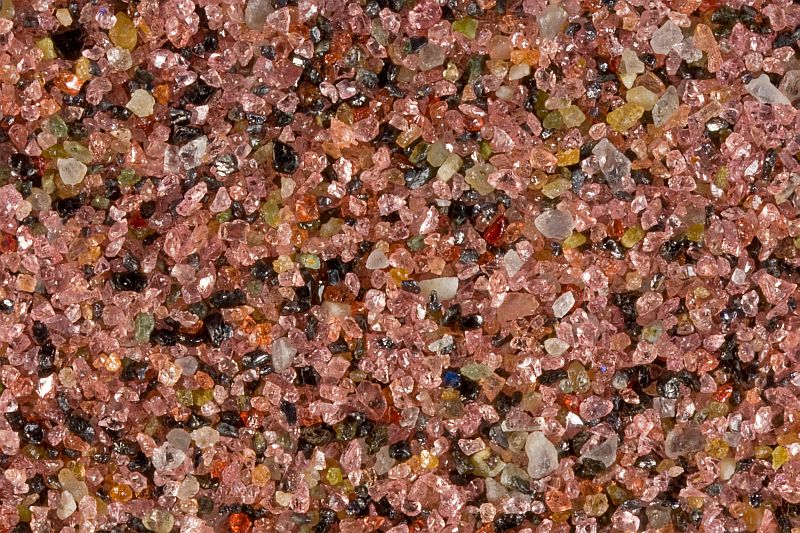
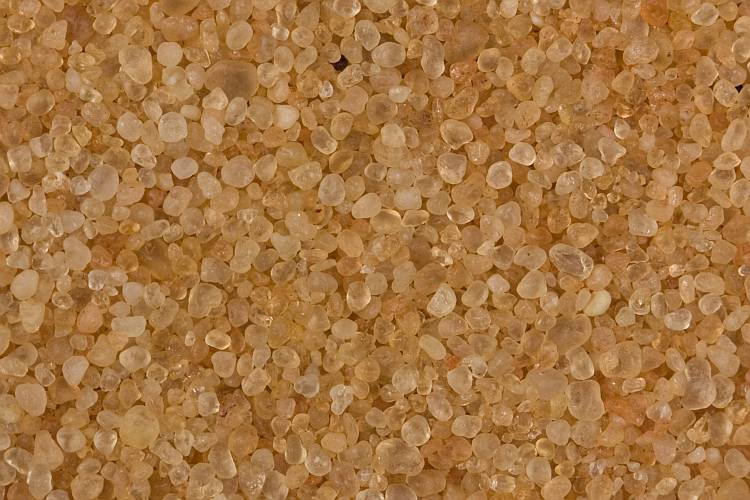
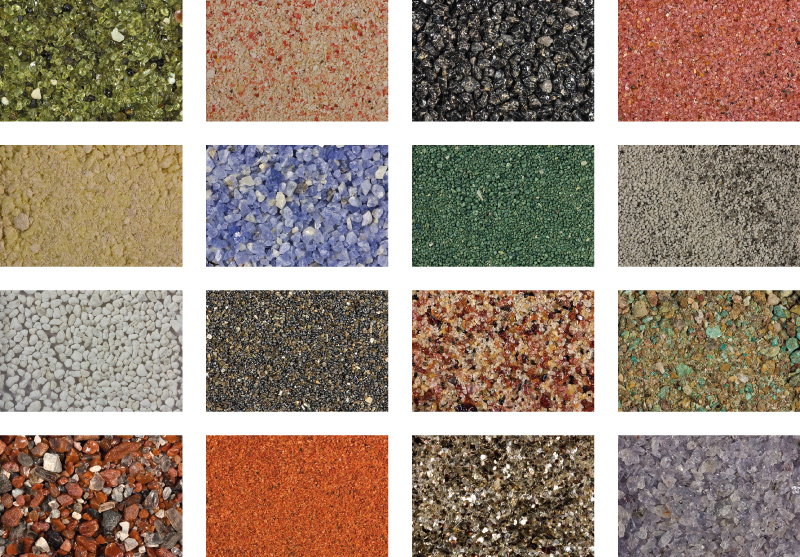
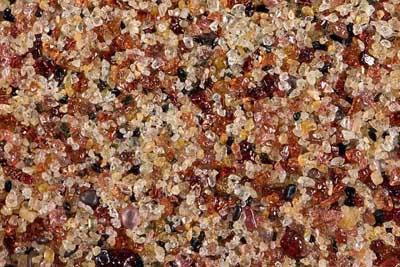
I am in Limbe Cameroon at the moment, Mt Cameroon somewhere in the rain clouds above!
Can you assist me in identifying the the translucent light green mineral in the sands here, Augite, Olivine or Sanidine?
Steve
Hi, Steve. It is very difficult to remotely identify minerals. Lab analysis is the way to go in most cases. Sometimes the identity is obvious but we need to be familiar with the region’s geological background to do that.
I love this site! I am doing a science fair project on minerals in sand, and this really helped.
Great site, the best… I love it very much… Thanks and appreciation to you